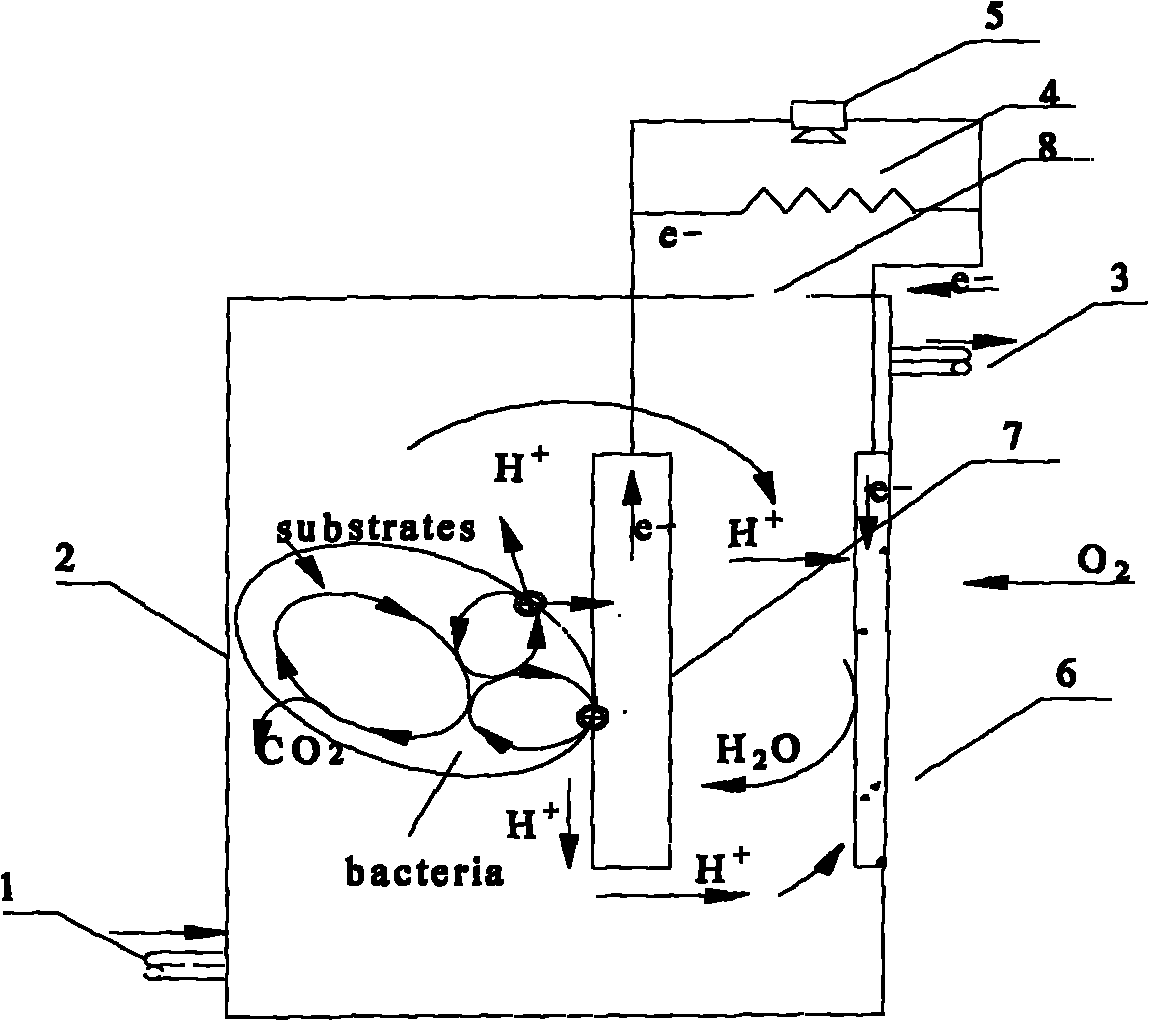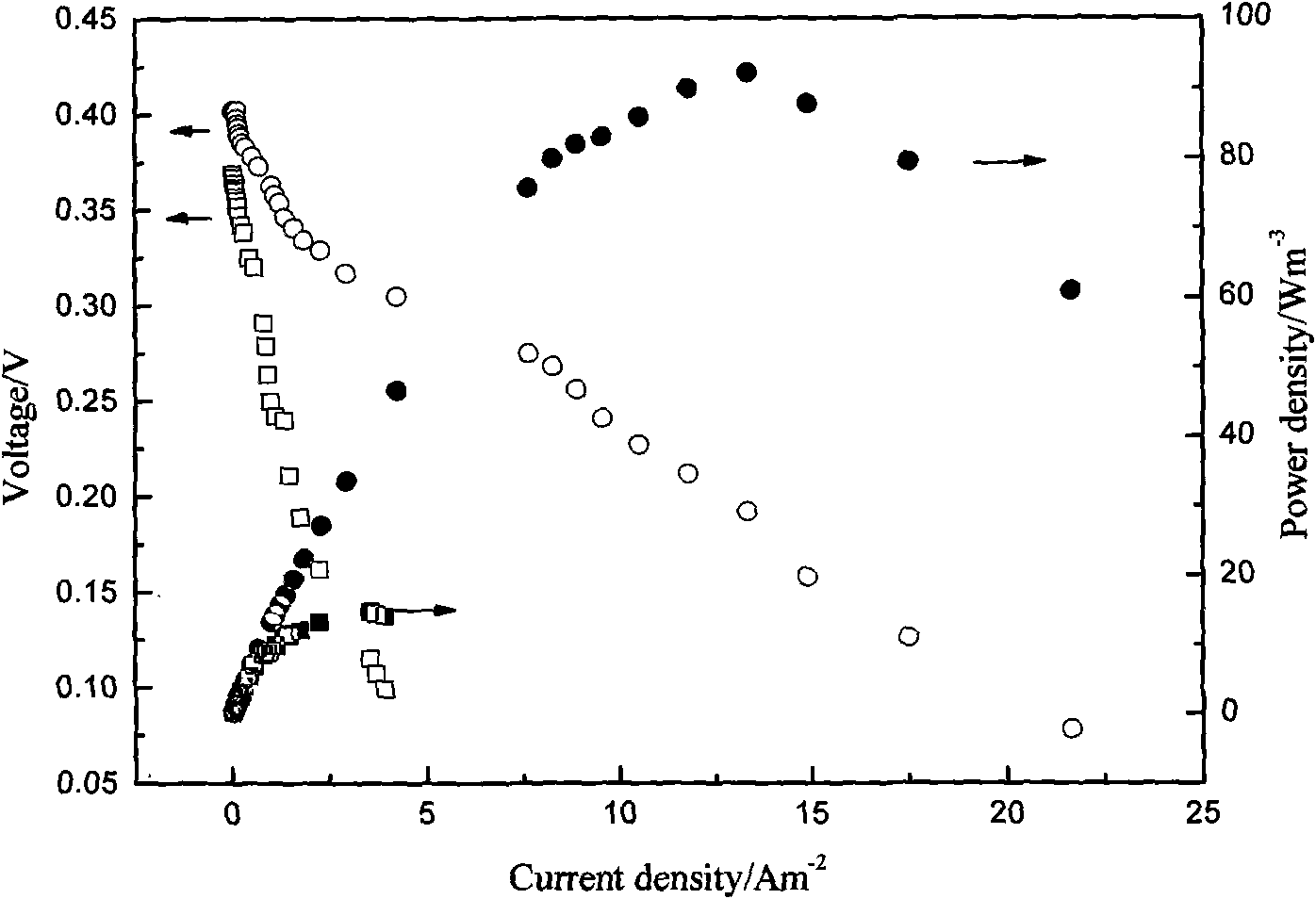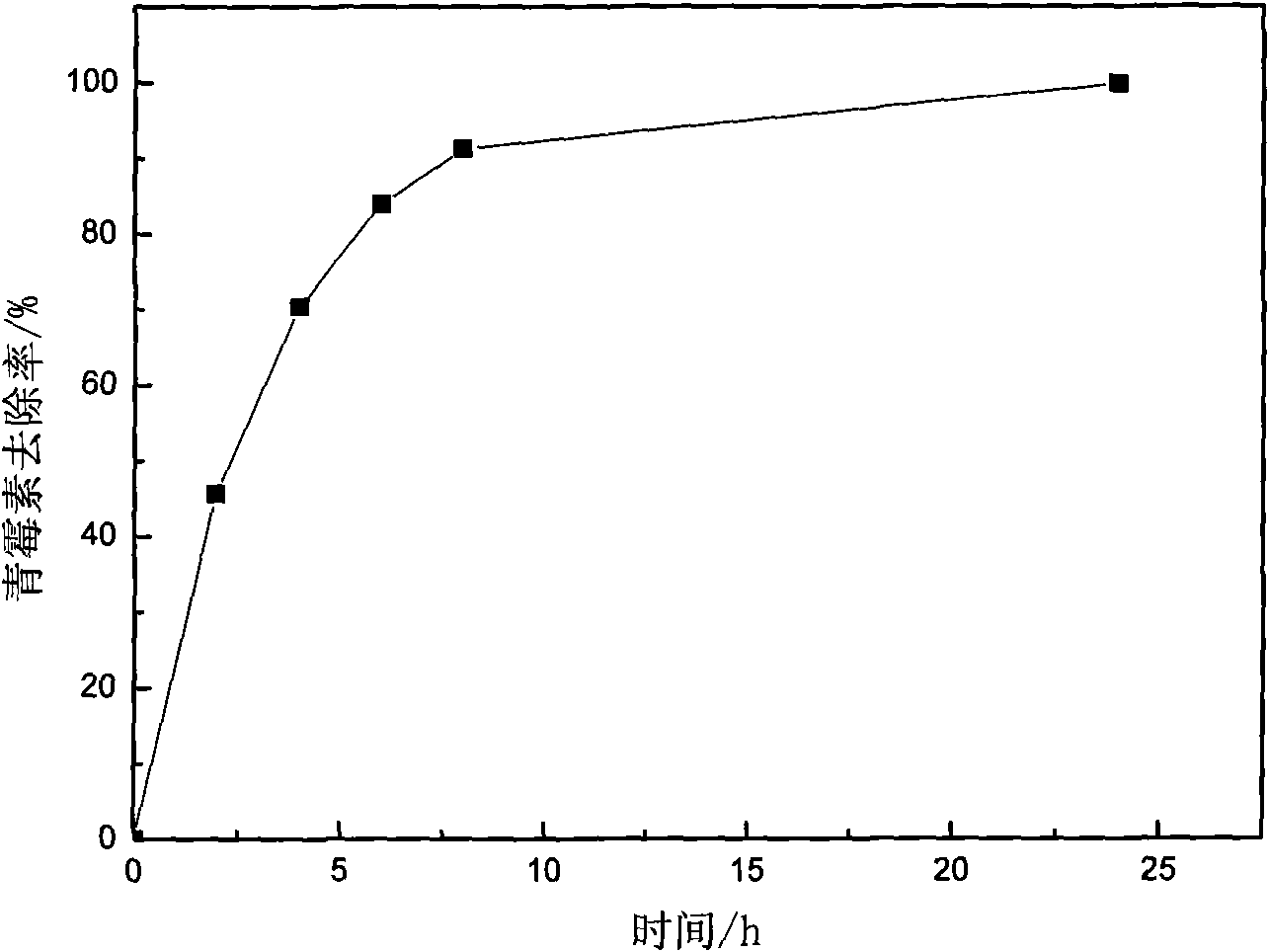Method for improving electron transfer capacity and output power of microbial fuel cell
A fuel cell and electron transfer technology, which is applied in the fields of biochemical fuel cells, fuel cells, fuel cell additives, etc., can solve the problems of expensive electron transfer intermediates, limited range of power increase, and microbial toxicity, etc., to improve the electron transfer. Efficiency, improved power output, low price effect
- Summary
- Abstract
- Description
- Claims
- Application Information
AI Technical Summary
Problems solved by technology
Method used
Image
Examples
Embodiment Construction
[0020] The following examples describe the present invention in more detail:
[0021] The present invention builds a square reactor, that is, a single-chamber microbial fuel cell without a diaphragm and without a mediator. figure 1 , The battery composition of the present invention includes a cathode 6 and an anode 7, and the two poles are placed on one side and inside of the reactor 2, respectively. The anode material is carbon felt, the cathode is a gas electrode containing metal catalysts such as Ag, and the distance between the two poles is 0.5-2.0cm. There is a water inlet 1 at the lower end of the reactor, and a water outlet 3 at the upper end. The upper part of the container has a sealing cover, and the sealing cover is provided with a reference electrode jack 8. The two electrodes are connected by copper wires and connected with the load 4 to form a closed loop. The adjustment range of the load is 1-10000Ω, and the electricity production performance data of the batter...
PUM
 Login to View More
Login to View More Abstract
Description
Claims
Application Information
 Login to View More
Login to View More - R&D
- Intellectual Property
- Life Sciences
- Materials
- Tech Scout
- Unparalleled Data Quality
- Higher Quality Content
- 60% Fewer Hallucinations
Browse by: Latest US Patents, China's latest patents, Technical Efficacy Thesaurus, Application Domain, Technology Topic, Popular Technical Reports.
© 2025 PatSnap. All rights reserved.Legal|Privacy policy|Modern Slavery Act Transparency Statement|Sitemap|About US| Contact US: help@patsnap.com



